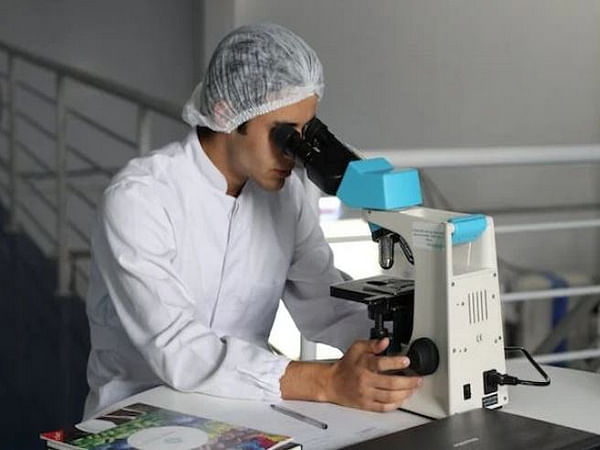Aarhus [Denmark], June 16 (ANI): Researchers discover a new, fast, and precise method for detecting COVID-19 and breast cancer indicators in blood samples. We may be able to use a simple blood test to diagnose diseases using tiny nanopores and nanobodies.
The study was published in Journal, ‘ACS Nano.’
Professor Jrgen Kjems and his research group at Aarhus University have achieved a remarkable breakthrough in developing tiny nano-sized pores that can contribute to better possibilities for, among other things, detecting diseases at an earlier stage in collaboration with Groningen University. Their research, which was recently published in the scientific journal ACS Nano, demonstrates a novel method for locating specific proteins in complex biological fluids such as blood without the need for chemical labelling. The study marks an important milestone in nanopore technology and has the potential to revolutionise medical diagnostics.
Nanopores are tiny channels formed in materials, that can be used as sensors. The researchers, led by Jorgen Kjems and Giovanni Maglia (Groningen Univ.), have taken this a step further by developing a special type of nanopore called ClyA with scanner molecules, called nanobodies, attached to it. These nanobodies, derived from antibodies, are capable of recognizing different proteins with astonishing accuracy. In this study, the researchers attached nanobodies to ClyA, using a DNA adapter. By using a series of nanobodies, they were able to create many different nanopore sensors, which could detect a variety of proteins of different sizes.
The research team created nanopores with specialized nanobodies attached, which have the ability to detect the Spike protein of SARS-CoV-2 (the virus that causes COVID-19) and a protein marker for breast cancer called urokinase-type plasminogen activator (uPA), respectively. By measuring changes in electrical currents that are caused by the presence of these proteins, the researchers can find and identify individual proteins and even determine their concentrations. What makes this breakthrough even more remarkable is that the nanopores remained highly accurate and sensitive even when tested with complex samples like blood.
Although the nanopores are invisible to the naked eye, the signficance of this research is palpable. The existing technologies already allowed the integration of nanopores into a portable device that can utilise the nanopores’ ability to scan liquids for specific molecules. Therefore, we can envision a future where patients can rapidly and accurately detect diseases like cancer or infectious diseases with a simple blood test. This could lead to earlier interventions, improved treatment outcomes, and overall improved healthcare. (ANI)
This report is auto-generated from ANI news service. ThePrint holds no responsibility for its content.



